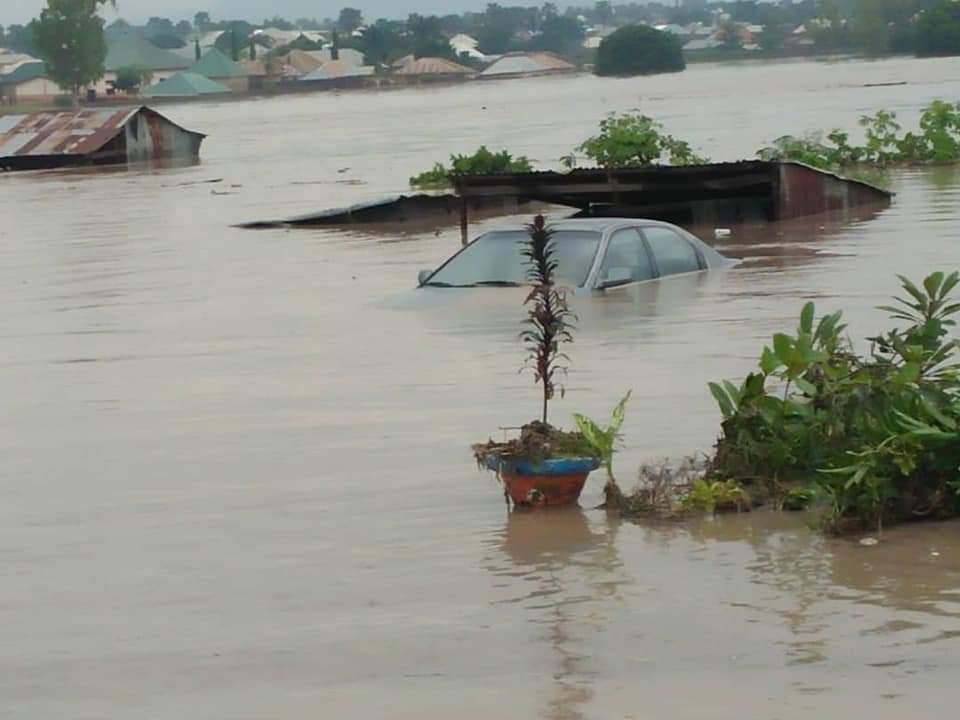The alarming and astonishing rate of structure destruction and annihilation caused by rainstorms is rising daily. Rainstorms have been a problem for residential buildings in Nigeria and worldwide. It has been a quiet incident that has included altering the existence of structures. Generally, considering facilities in Nigeria, the detrimental effects of rainstorms cannot be overstated or undervalued.
The current condition includes a wide range of potential damage situations caused by rainstorms. It’s a catastrophe for the structure.
Causes of Rainstorm: Rainstorm Effects on Nigerian Residential Buildings
The deluge or onslaught of rain that defines a storm can describe as a rainstorm. The foundation and shape of a building can be deformed and distorted by rainstorms.
According to research, rainstorms frequently affect buildings in metropolitan areas. Rainstorm effects on Nigerian Residential Buildings should especially be put into consideration. Compared to storms or hail events, the detrimental effects of that environmental risk are typically underestimated. Additionally, the amplification of extreme weather events brought on by climate change, along with the increased physical fragility of assets, will result in more effects on the built environment.
Negative Effects of Rainfall on Buildings

Due to the limited nature of rainstorms, it is challenging to evaluate their likelihood and gravity with precision because the rain gauges that are currently in use may not have adequately sampled the complete rain. Both directly and indirectly, high-intensity hail and rainstorms impact buildings.
Engineering studies have recently demonstrated the wide range and high physical susceptibility of building constructions that are constantly impacted by encroaching water during heavy rains that cause rainstorms, including flat roofs, roof terraces, and balconies; soil-covered slabs of underground parking; connections between steep roofs and other building parts; and soil-contacted basement walls and bottom plates, including windows and external doors.
It is important to note that most damages can be avoided if the exposed buildings are made more flexible. Any adjustments necessitate competence in the demanding damage processes to evaluate the shortcomings and reduce the physical vulnerability of building constructions exposed to intense rainstorms.
Following a downpour, wastewater overflow that damages structures may produce urban pluvial flooding. The hazards of flooding from sewers owing to hydraulic overload can be evaluated on a building size using the model method IVART, according to a thorough analysis of the effects and implications in Dresden, Germany (Integrated Spatial Vulnerability and Risk Assessment Tool).
Results from the Commonwealth of Nations can determine the efficacy and efficiency of flood resilience devices.
The future regional implications of global climate change may be quantified, and planning for changes depends heavily on these forecasts. The likelihood and severity of dangerous rainstorms have been growing in European regions over the past 40 years, which is relevant (Grieser and Beck 2002).
Nigerian Building Collapses: Rainstorm effects on Nigerian residential buildings
A rainstorm’s deleterious effects largely depend on how physically vulnerable a building is or how exposed materials and structures (such as roofs and façades) tend to be harmful and destroyed.
The effects of rainstorms make it difficult for existing structures to be adapted; therefore, a thorough investigation of the impact is necessary before developing effective adaptation measures.
Heavy rainstorm damage profiles frequently include moisture infiltration, water stains, efflorescence, and water inflow through the building shell on inner building components. Damages to the structure of the structures are frequently present along with these.
Storm-related precautions
To prevent rainstorms in Nigeria, the following steps can be taken.
Rain gutters and downspouts.
A functioning gutter system is essential to prevent rain from entering the building or harming the foundation. Clean gutters are necessary to avoid blocking and water overflow. There are many things available that may be used to maintain gutters and keep them clear of debris.
Rainwater is prevented from running down the building’s walls by the gutters, which are considered the link between the roof and the ground. It can direct the water from the building’s downspouts away from the building’s foundation and toward a garden or other vegetation. No of the intensity of the rainstorms, clear gutters, and effective downspout utilization will ensure that the building’s foundation remains unharmed.
Examining the roof
Against most weather situations, especially rainstorms, the roof is undoubtedly the first line of defense. The top must be correctly observed and examined for loose shingles, soft areas, and surface divots. A single break in the roof can cause a leak, which can cause additional internal damage to the walls and ceilings.
Dependable Base
Maintaining rainwater runoff away from building foundations requires a strong foundation. The land around the building should be sloping away from the foundation. For the most significant benefit of preventing runoff damage, it is advised to have a downhill slope of at least five feet. When rainwater pools next to buildings, it penetrates the soil and may weaken the foundation. When cracks develop, water can seep in and cause the basement to become damp or moist. Mold, mildew, termites, and carpenter ants will all be drawn to the basement’s moisture. These setbacks can be avoided by keeping water away from the building.
Collection Method for Rainwater
Another choice for dealing with downpours is to install a rainwater collection system. Rainwater enters the tank or barrel via the downspout after exiting the gutter. It is possible to reuse rainwater for irrigation or seasonal uses. Depending on what you need them for, different rainwater collectors exist.
The most expensive construction damages are those caused by water. If it is not handled immediately, it will suffer significant long-term damage and may need extensive repairs or replacement.
It is strongly encouraged to be ready and to stop water damage before it is too late.
Conclusion:
Its important to develop your property to be able to withstand rainstorm effects on Nigerian residential buildings. A notable Real Estate Company in Lagos Nigeria that can help develop such buildings is Switchlanes Investment Limited. We currently have some apartments currently selling to meaning Nigerians looking to develop apartments that can withstand such rainstorm effects in Nigeria. One of such apartments is the Yorkville Apartment and the other is Deblos Court


